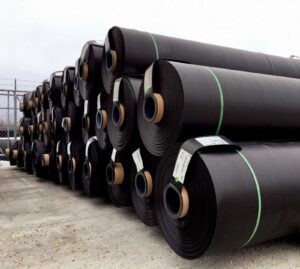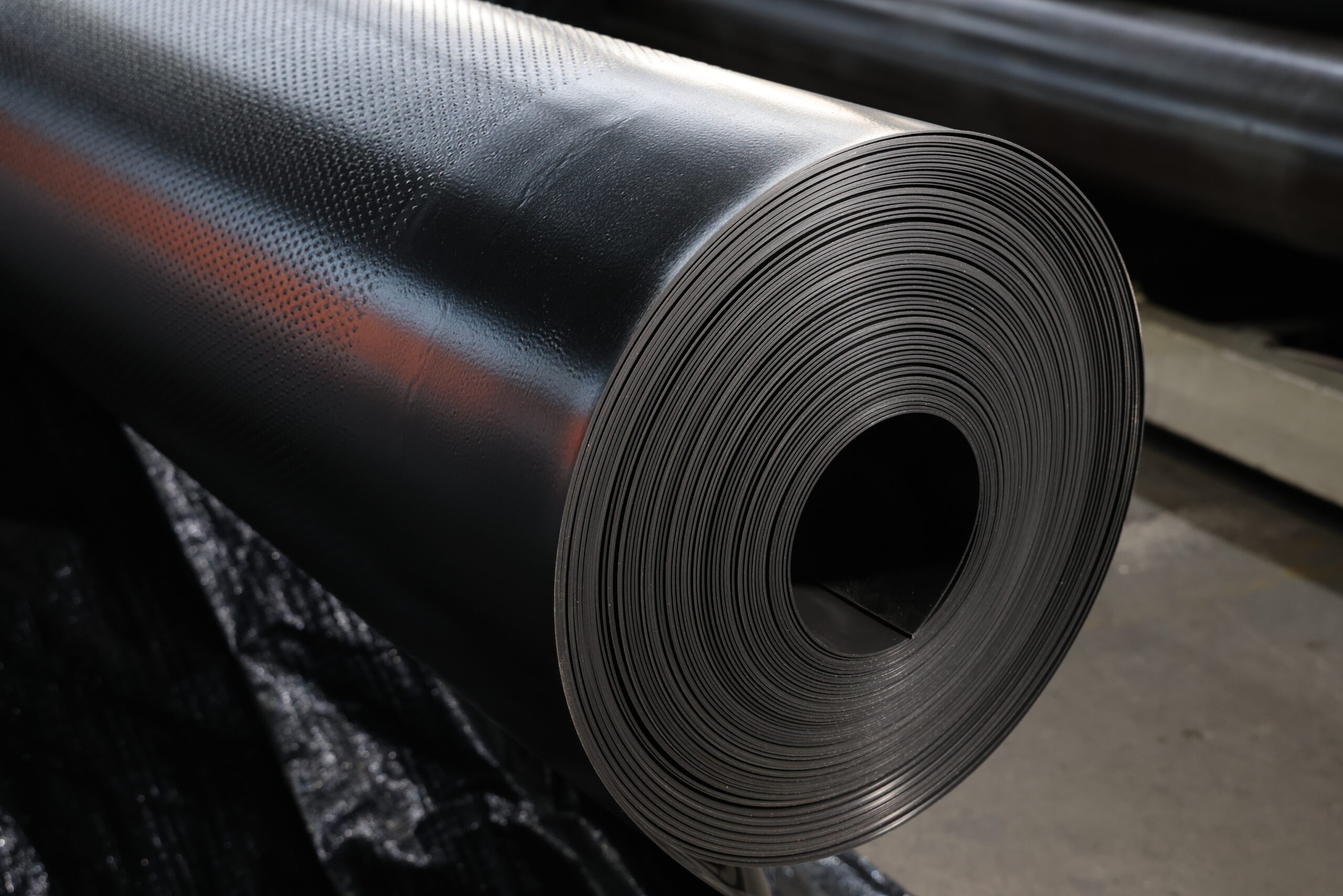Why do we need geomembrane for engineered grassland?
There are several legitimate reasons for using geomembranes in the design and construction of engineered turf, primarily including the following considerations:
Anti-seepage effect: Geomembrane has excellent anti-seepage performance and can effectively prevent water from penetrating into the ground. In grassland projects, preventing water infiltration can help maintain the stability of the land, reduce soil erosion, and improve the erosion resistance of the grassland.
Water Management: Through the use of geomembranes, the distribution and utilization of water can be managed more effectively. It can help keep the soil moist where it is needed, reduce water penetration in unwanted areas, and help provide the right soil moisture to promote plant growth.
Soil protection: Geomembranes can provide a layer of protection to prevent soil erosion and damage from external factors, including water flow, wind erosion, etc. This helps maintain soil fertility and structure.
Resistant to Turf Damage: In some situations, especially in high-traffic areas, grass can be subject to greater stress and wear. Geomembranes can act as a protective layer, reducing pressure on the grass surface and reducing the risk of turf damage.
Stable foundation: For some projects that require building structures on land, geomembranes can help stabilize the foundation, prevent soil settlement or deformation, and ensure the stability of the structure.
Drainage management: Permeable geomembranes can be used to promote drainage, prevent water from being retained in the soil, help prevent waterlogging and over-soaking of roots, and improve the growing conditions of grassland.
Environmental protection and sustainability: Choosing environmentally friendly geomembranes can help reduce adverse impacts on the environment and ensure that the project is more sustainable in terms of standards.
In general, the use of geomembranes can help optimize the water management, soil protection, structural stability and other aspects of engineered grassland, and improve the quality and sustainability of the grassland. However, when using geomembranes, it is necessary to make reasonable choices based on specific engineering requirements and environmental conditions, and ensure compliance with relevant regulations and standards.

How to install geomembrane on engineered grassland?
Installing a geomembrane on engineered grass is a complex process that requires careful planning and operation. The following are general geomembrane installation steps:
Engineering Design and Planning: Detailed engineering design and planning is required before proceeding with geomembrane installation. This includes determining the material specifications and thickness of the geomembrane, as well as the coverage and layout of the geomembrane.
Site Preparation: Clean and level the grass project area to ensure the surface is free of sharp objects, gravel or other materials that could damage the geomembrane.
Geological Survey: Conduct a geological survey to ensure that the geological characteristics of the land meet the design requirements, which helps in selecting the appropriate type and thickness of geomembrane.
Base Layer Preparation: Lay a layer of base material, usually fine sand or gravel, over the grass surface to provide a smooth foundation and help the geomembrane adhere better and drain better.
Geomembrane Laying: Lay the geomembrane over the base layer, making sure it is fully unfolded and there is overlap between edges. The joints between geomembranes should be sealed by hot melt welding or other appropriate jointing methods to prevent moisture penetration.
Fixing and Adjustment: Use fixings, such as geomembrane tacks or other fixing devices, to fix the geomembrane to the base layer. Adjust the position of the geomembrane to ensure it is tightly attached to the ground and avoids the formation of air gaps.
Cooperate with other facilities: According to project needs, install and cooperate with other facilities, such as drainage systems, irrigation systems, etc. These facilities need to work together with the geomembrane to ensure the functional integrity of the entire project.
Turf Cover: Laying turf or other grass cover material over the geomembrane. This step is to provide better aesthetics and help protect the geomembrane.
Quality Control and Inspections: Quality control and inspections are performed during the geomembrane installation process to ensure the integrity and effectiveness of the geomembrane. Check whether the seams are sealed and whether the fixing is firm, etc.
Monitoring and Maintenance: After installation, regularly monitor and maintain the geomembrane. This helps potential problems be identified and dealt with promptly, ensuring the long-term effectiveness of the geomembrane.
What kind of geomembrane should be used for engineered grass?
In the design and construction of engineered grasslands, the choice of geomembrane depends on multiple factors, including land conditions, hydrogeological conditions, engineering uses, etc. Here are some common geomembrane selections and considerations:
High-density polyethylene (HDPE) geomembrane: HDPE geomembrane has excellent anti-seepage performance and good water barrier effect. It is suitable for grassland projects that require high anti-seepage properties. It is effective in preventing water infiltration, protecting soil and maintaining land stability.
Low-density polyethylene (LDPE) geomembrane: LDPE geomembrane is relatively soft and suitable for grassland projects that require a certain degree of flexibility, especially in sites with complex terrain or certain changes. LDPE geomembranes are generally easier to lay and install.
Geosynthetics: In addition to traditional geomembranes, geosynthetics such as geotextiles can also be considered. Geotextiles can provide tensile strength and resistance to flexure, helping to enhance the stability of your grass.
Permeable geomembrane: Sometimes, it is necessary to consider a permeable geomembrane to promote the penetration of water and avoid moisture retention on the surface, which helps to provide better drainage and has a positive impact on the growth and health of the grass.
Environmentally Friendly Geomembranes: Consider choosing geomembranes that meet environmental standards to reduce adverse impacts on the environment.
When making a selection, the purpose of the grassland, geographical conditions, climatic conditions, and project budget need to be considered. It is best to have a professional engineer or design team conduct a detailed evaluation and select the appropriate geomembrane type based on the specific situation. In addition, ensure that the installation of the geomembrane complies with relevant standards and specifications to ensure the quality and sustainability of the project.
Author

Founded in 2002, Tinhy's team focuses on the manufacturing, marketing, installation, application and research and development of geosynthetic materials.
View all posts





